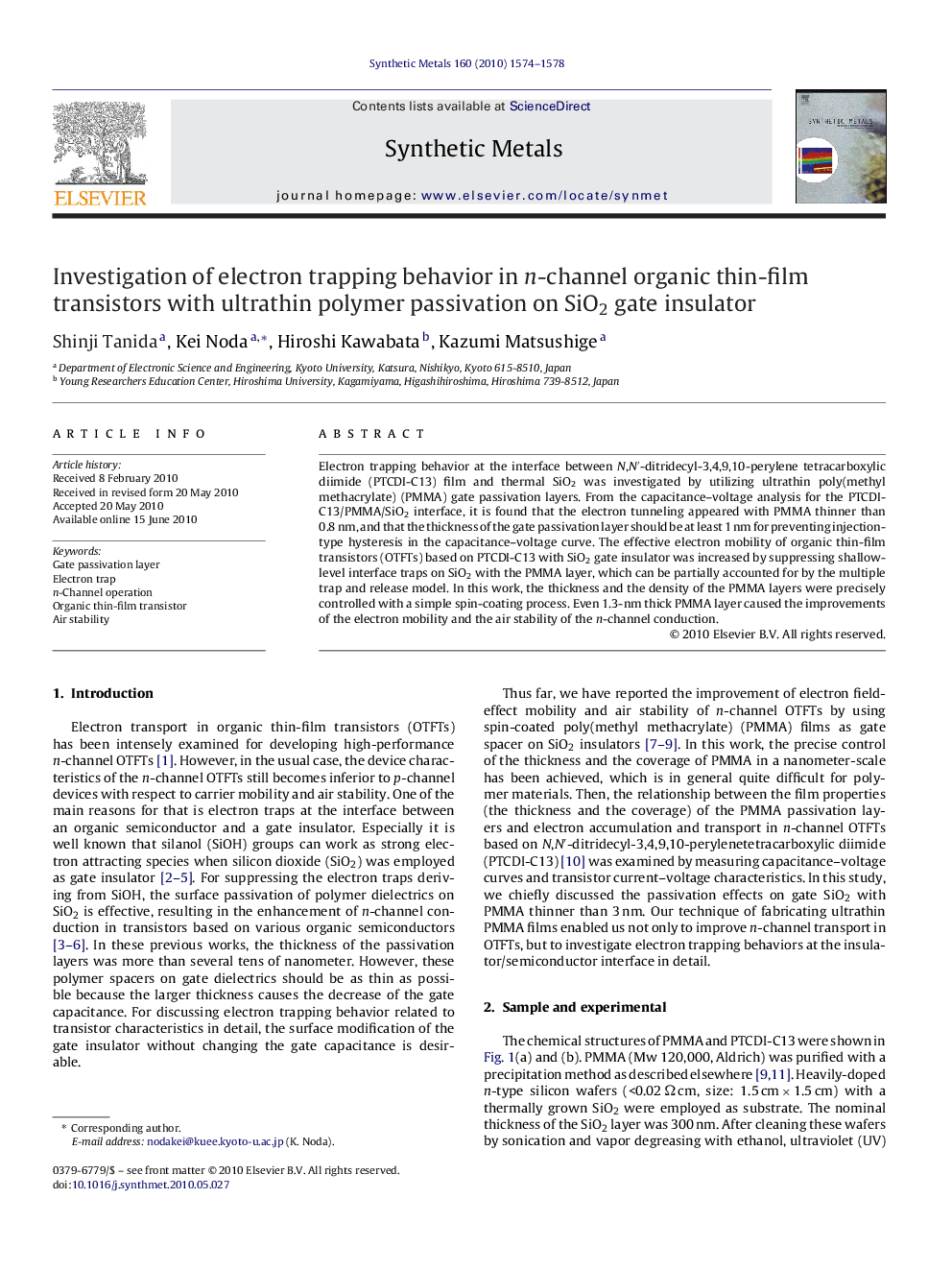| Article ID | Journal | Published Year | Pages | File Type |
|---|---|---|---|---|
| 1442651 | Synthetic Metals | 2010 | 5 Pages |
Electron trapping behavior at the interface between N,N′-ditridecyl-3,4,9,10-perylene tetracarboxylic diimide (PTCDI-C13) film and thermal SiO2 was investigated by utilizing ultrathin poly(methyl methacrylate) (PMMA) gate passivation layers. From the capacitance–voltage analysis for the PTCDI-C13/PMMA/SiO2 interface, it is found that the electron tunneling appeared with PMMA thinner than 0.8 nm, and that the thickness of the gate passivation layer should be at least 1 nm for preventing injection-type hysteresis in the capacitance–voltage curve. The effective electron mobility of organic thin-film transistors (OTFTs) based on PTCDI-C13 with SiO2 gate insulator was increased by suppressing shallow-level interface traps on SiO2 with the PMMA layer, which can be partially accounted for by the multiple trap and release model. In this work, the thickness and the density of the PMMA layers were precisely controlled with a simple spin-coating process. Even 1.3-nm thick PMMA layer caused the improvements of the electron mobility and the air stability of the n-channel conduction.
